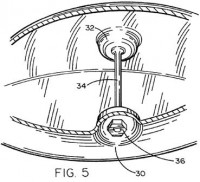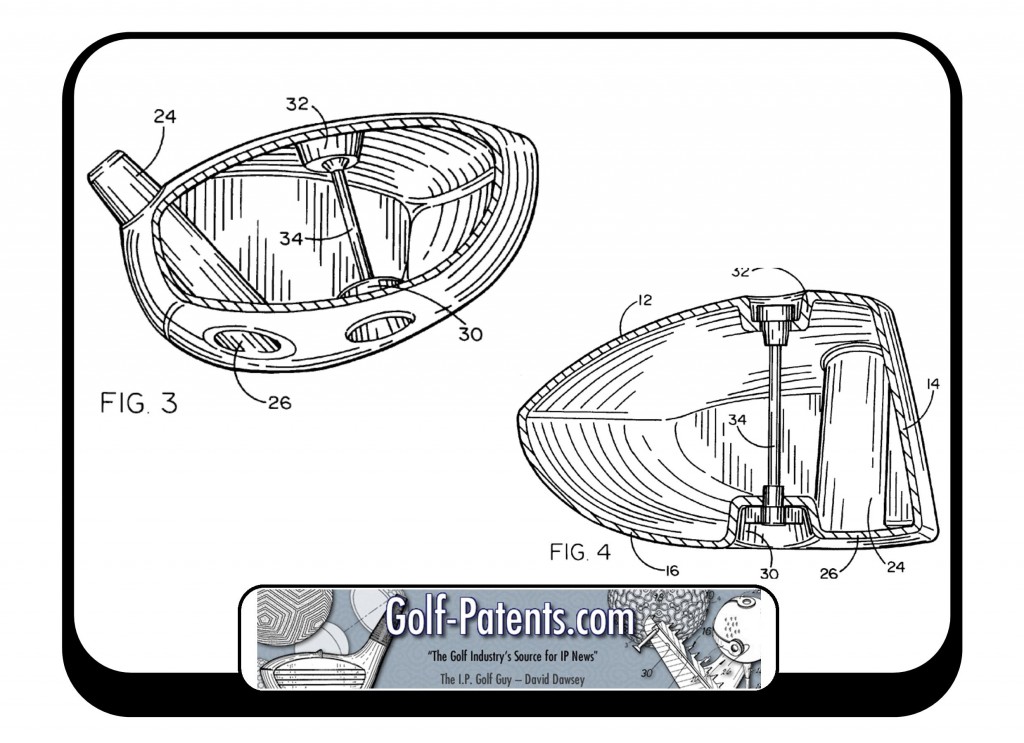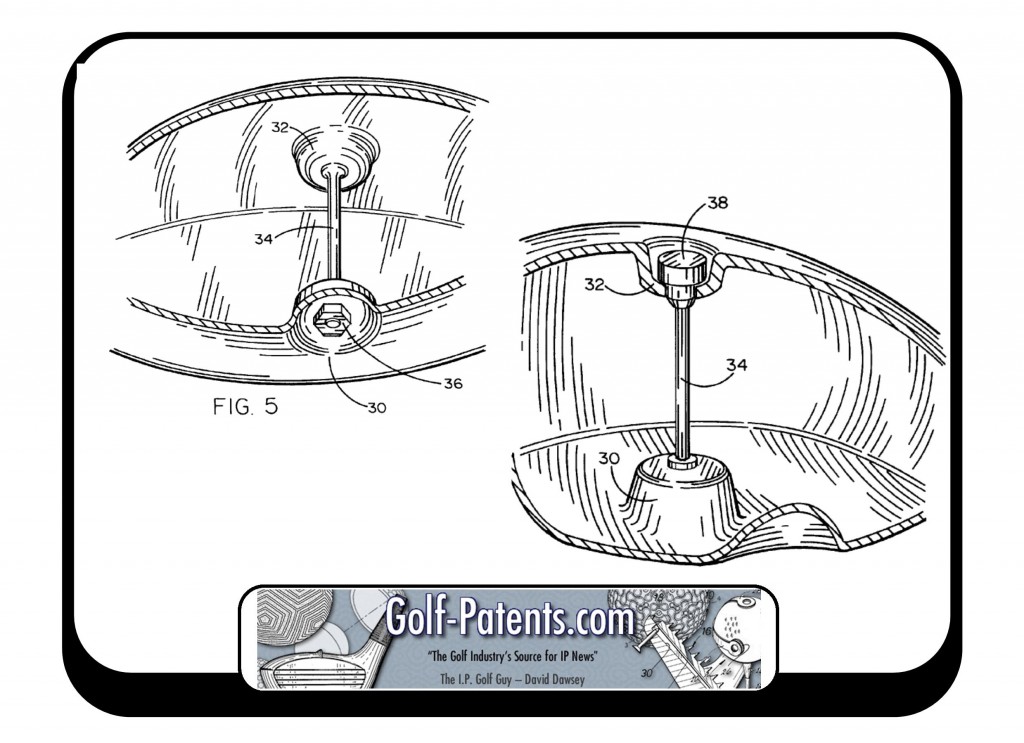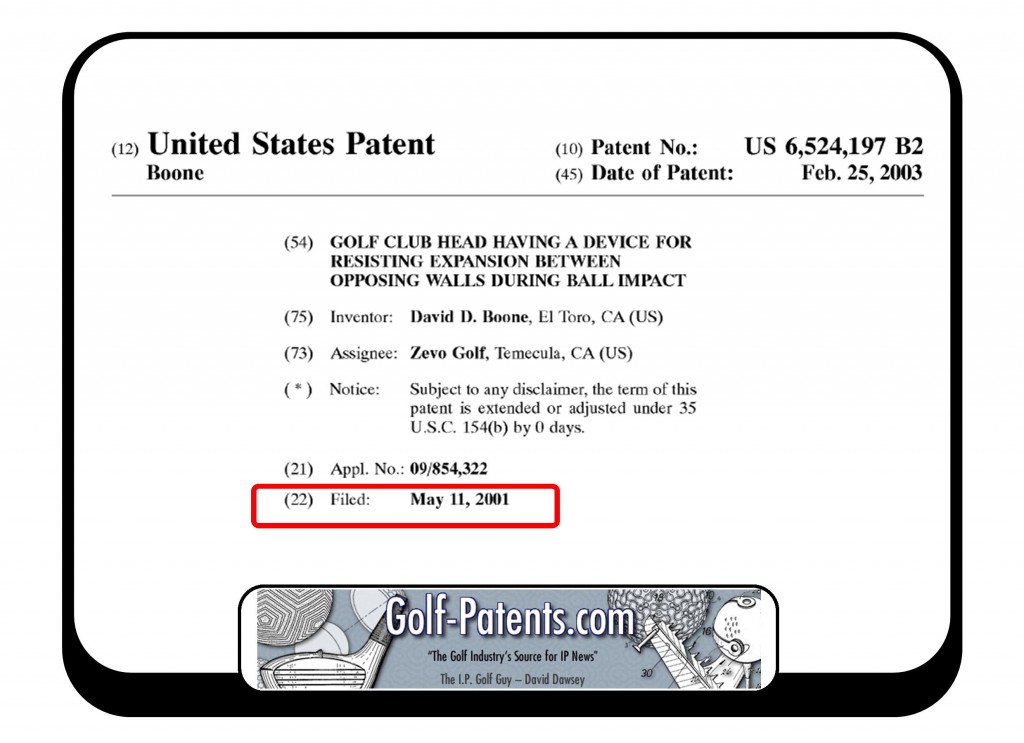Jailbreak Technology 2.0?
I recently came across an invention titled “golf club head having a device for resisting expansion between opposing walls during ball impact.” “Hummmm, sounds like this may be version 2.0 of Callaway’s breakthrough Jailbreak technology,” I said to myself, so I read on.
The abstract told me:
An improved golf driver club head wherein each driver club head has a tensioning device, which places the peripheral/outer structure of the club head in compression; thereby, resulting in a stronger, more rigid club head structure. In the preferred embodiment, the tensioning device comprises an elongated cylindrical member having respective end members. The top and bottom surfaces of the golf club head are each provided with a cylindrical depression or recess and an aperture or passage at the lower end of the depression. The passages are just large enough to accommodate the tensioning device, but are too small to pass the respective end members. During club head manufacture, the length of the device is selected to apply a compressive force between the head surfaces. Fine adjustment is accommodated by a threaded end member. The actual compression force may be selected to yield the best performance depending on the geometry, structure and material of the club head.
Interesting, perhaps Jailbreak 2.0 has some fine tuning adjustability. Check out the design:
OK, this must be Jailbreak version 2.0, so I read on. The specification explains:
Metal wood (driver) club heads utilize thin wall castings or forgings to achieve their size, shape and weight. The larger the driver club head, the thinner the castings or forgings that are required to produce the intended resulting driver club head.
When a driver club head comes into contact with the golf ball, which is stationary, during the golf swing, the resultant collision, depending on the impact velocity and angle of attack, causes the golf ball to compress on the one hand and the driver club head to deform on the other.
The amount of deformation that occurs to the driver club head during impact with the golf ball depends on, but is not limited to the following criteria: 1. The size of the driver club head; 2. The material used to construct the driver club head; 3. The design and construction of the driver club head; 4. The wall thickness of the driver club head; 5. The velocity of the driver club head as it comes into contact with the golf ball; 6. The angle of attack at which the driver club head impacts the golf ball; 7. The distribution of mass within the club head; 8. The mass (weight) of the club head; 9. The stiffness of the club head structure; 10. The strength of the club head structure.
As driver club heads become larger, their ability to prevent deformation at impact with the golf ball becomes more difficult. Even with the use of high performance materials such as titanium or carbon fiber, the weight constraints common in most driver club heads make it imperative to design driver club heads using thin walls. As the driver club head comes into contact with the stationary golf ball during the downswing, the driver club head will oscillate and deform in an effort to find its way around the stationary golf ball. The golf ball compresses under the load during said impact with the club head initiating a lateral direction change of the golf ball away from the center of gravity of the club head resulting in the golf ball rolling in the direction of least resistance prior to the initiation of the rebound phase of the golf ball during impact with the club head. During this impact process, the stored energy that normally would be directed from the driver club head to the golf ball is momentarily redirected to the driver club head. The resulting redirection of energy transfer causes the driver club head structure to flex and deform. This occurrence constitutes a loss of energy that could be imparted from the driver club head to the golf ball. The resulting loss of energy from the driver club head to the golf ball during impact will result in a reduction of energy that can be transferred from the club head to the golf ball resulting in a loss of distance that the golf ball will travel.
Yep, surely this must be Jailbreak technology 2.0. You can just imagine me rubbing my hands together like an evil genius laughing “oh, the number of visitors to my blog is going to skyrocket when I publish this scoop, golfers aren’t even thinking about the 2018 version of Jailbreak technology yet.”
Just then I heard this sound effect in my head and it hit me, “David – you are reading a patent application filed over 15 years ago.”
“Impossible,” I thought, “golf equipment marketing has never lied to me in the past; these are clearly alternative facts and someone must have hacked into the patent office records and inserted this fictitious patent.”
As quickly as my sails inflated, they deflated when I found this posting on eBay.
I said to myself, “OK self, stay calm, it must be a prototype stolen from the Pirate Ship, Jailbreak technology is a truly epic breakthrough; after all, there is nothing in the heads of their competition.”
Nope, the hacking conspiracy isn’t true; it is actually an invention from 2001, or earlier. In fact, I found a nice description of the Zevo Compressor Woods on Jeff Sheets Golf website. If it is any consolation, it turns out that Jailbreak technology was even difficult to perfect and implement 15 years ago.
… and now you know the rest of the story!
(OK, admit it, even Callaway guys had to chuckle a little bit when reading this post)
Dave Dawsey – The Golf Invention Attorney
PS – follow me on Twitter (@GolfPatents) and sign-up HERE to receive posts via email.
PPS – If you like what we are doing, please considering helping us out and make your online gear purchases through our Amazon affiliate link. Every little purchase helps us keep the site up and running! Thanks.




